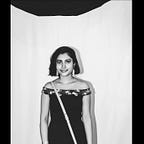Fashion and Femininity in Alfred Hitchcock’s Rebecca (1940)
Alfred Hitchcock’s Rebecca (1940) is a film adaptation of the gothic novel by Daphne Du Maurier. The film explores the complexities of femininity — as well as its thematic relation to masculinity and dominance — through the abstract technique of ambiguity, which is instilled in the costume design and significant props. This article comments on numerous aspects of the film that depict those notions while making references to Shelley Stamp’s “Women and the Silent Screen” from The Wiley-Blackwell History of American Film, Robert Dickason’s “Ambiguity and uncertainty in Rebecca” from Féminin/masculin: Littératures et cultures anglo-saxonnes, and Sara Tatyana Bernstein’s “How Alfred Hitchcock’s Rebecca Used Fashion To Display The Unseeable” from Dismantle Magazine. The complex, ambiguous depictions of gender and power dynamics are discussed in relation to authority by way of costume and prop design.
The original novel by Daphne Du Maurier, eponymously titled Rebecca, instilled a paradoxical sense of omnipresent distance in the narrator, who is only referred to as Mrs. De Winter and by no first name at any moment in the film. Alfred Hitchcock reestablishes this notion in the title sequence itself — the film is called a “picturization” of the novel rather than an “adaptation” as is popularly used. To “picturize” the very ambiguity of Mrs. De Winter’s…
